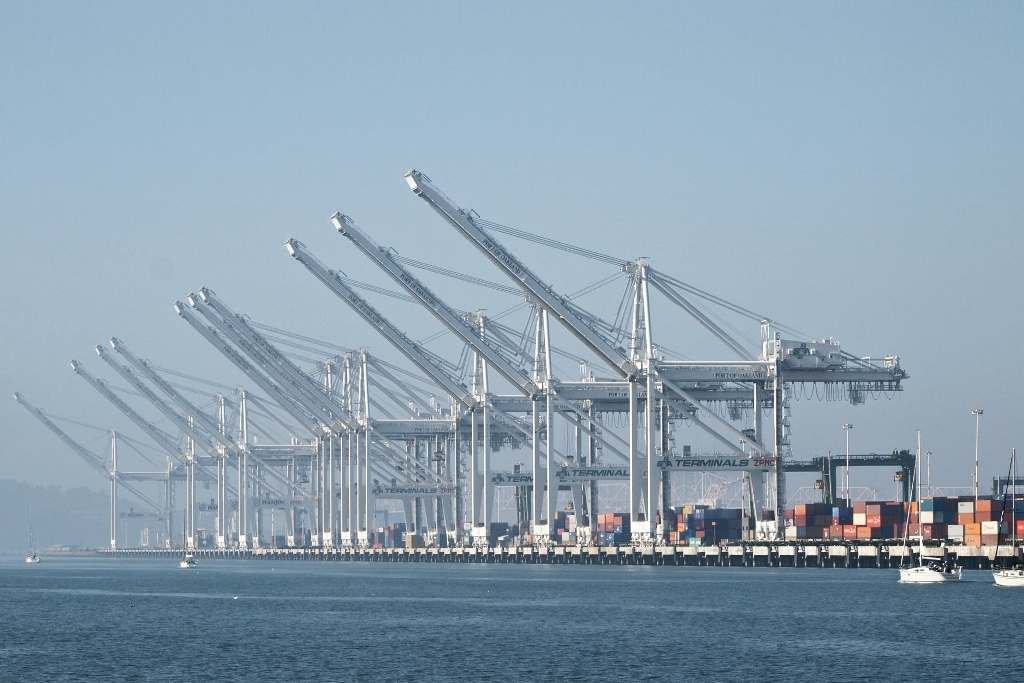With national attention focussed on the supply chain, infrastructure investment and jobs, Port of Oakland has decided to invest in a renewed, smart and zero-emissions port. That was Executive Director Danny Wan’s message this week at his annual State of the Port address.
“The theme for 2022 is to invest in and plan for a future that is not what used to be, but one that improves upon the past.” These investments aim to:
Modernise and expand the Oakland International Airport so it’s convenient and safe and also full service both domestically and internationally; Grow a seaport that supports our regional economy by providing cargo drop offs and receiving that are on time, uncongested and transparent; Provide more choices of entertainment and attractions at our Oakland waterfront and improved access to our shoreline parks.
“We must do all of the above by bringing into reality green energy technology and dig deep into our creativity to realise a Port that is respectful of the environmental and urban community ecosystem that we do business in,” Wan emphasised.
His remarks came as Oakland recovers from two years of coronavirus pandemic headwinds. The Executive Director said Oakland International Airport passenger traffic has returned to 70 percent of pre-pandemic levels. The Oakland Seaport set a record for containerised import volume in 2021, he added. Meanwhile, Oakland reached an environmental milestone by reducing diesel emissions 86 percent from 2005 levels.
“Things have been tough,” Wan conceded. “But, Port staff, our dock workers, terminal operators, frontline workers, our airlines, concessionaires and tenants all got going and showed a lot of great creativity, grit and skill.”
Wan said the Port anticipates significant increases in both Aviation and Maritime business. The Airport is working on plans to modernise existing terminals and develop new facilities for a new passenger terminal, he said.
The seaport is working on a long-term, land-use plan to accommodate higher containerised cargo volumes.
Where’s the money coming from to prepare for growth? Wan listed several sources that the Port has already identified:
$280 million from state sources for traffic and rail safety and local road infrastructure improvements around the Embarcadero, Jack London and Howard Terminal corridor; an additional $15 million annually at the Airport from the federal Bipartisan Infrastructure Bill; more than $5 million for electrical infrastructure and renewable power at the seaport from the federal Port Infrastructure Development Program; and and a portion of a $2.3 billion state of California fund intended to reduce supply chain bottlenecks and support electric vehicles and infrastructure.
“All of these funds are essential for our seaport infrastructure and airport improvement projects over the next 5-to-10 years, and we expect there will be more,” Wan said.
Wan told his audience that the Port’s 2022 outlook is promising. “The Port has attracted three new vessel services making Oakland their first US stop,” he said. Airlines have restored routes suspended during the pandemic.
Wan said, “Oakland would boost seaborne exports that declined 8 percent last year due to supply chain breakdowns.”
“Our mission is to promote efficient commerce, create jobs, and play a major role in maintaining a vibrant regional economy while meeting obligations to clean the air and the environment,” Wan continued. “That is why we are proud of the 84,000 jobs that the Port and its partners create, the $698 million of state and local taxes our activities generate, and the investments we, along with our community, business and government partners are making for the future,” he added






